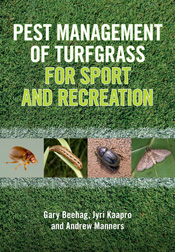Soil Specification Templates
Extracted from Soils for Landscape Development, Second Edition
Second Edition By: Simon Leake, Elke HaegeSoil specifications templates provided as an editable PDF for ease of use in reports.
These soil specifications have been extracted from the second edition of Soils for Landscape Development and are provided as an editable PDF for ease of use in reports compiled by landscape designers for their clients. Please note that practitioners will need to consult the book to ensure that these specifications are properly applied. The corresponding page numbers where these items appear in the book have been retained in the PDFs so that readers can easily reference this material. + Full description
The updated templates incorporate two new soil specifications, including a biofiltration soil specification and an ultra lightweight soil media for extensive rooftop landscapes, and contain the elements required to ensure adequate investigation of the site soil before finalising design works. They can be used as a format for preparing or tailoring a site soil investigation specification for any project. It should be noted that these specifications are typical only, not site-specific, and may require specialist advice where site conditions or performance criteria is outside the parameters of these typical specifications.
These typical specifications have been provided for use by proficient and experienced landscape design professionals who are able to determine when these specifications are suitable. Where there is any doubt, consult with appropriate experienced professionals, such as restoration ecologists, soil scientists, experienced landscape architects or consulting arborists.
- Short descriptionNews
Extracted from Soils for Landscape Development: Selection, Specification and Validation, Second Edition.
Sales in Australia and New Zealand only. Elsewhere, this title is available through CABI (external link).
Details
PDF | December 2024 | $ 14.99ISBN: SSTWEB2 | 49 pages | 297 x 210 mm
Publisher: CSIRO Publishing
Contents
- The PDF file contains:
- Site soil investigation elements required to ensure adequate investigation of the site soil before finalising design works. They can be used as a format for preparing or tailoring a site soil investigation specification for any project. (Part I Site investigation/analysis)
- Site soil preparation specifications. (Part II Preparatory soil works)
- Product specifications. (Part III Product specifications)
- Validation and certification specifications. (Part IV Validation specifications)
Part I Site investigation/analysis
A1 Site soil investigation and characterisation
A2 Site subgrade investigation and characterisation for disturbed sites
Part II Preparatory soil works
B1 Stripping and stockpiling
B2 Site subgrade preparation
B3 Imported subsoil
B4 Soil schedules (profiles, volumes and depths)
Part III Product specifications
C Soils for turf and lawns
C1 Passive amenity turf
C2 Active high-traffic turf
C3 Sports field turf
D Soils for gardens and mass planting
D1 Mass planting soil
D2 Garden bed planting soil
D3 High fertility display and vegetable production topsoil
D4 Advanced tree and vault soils
E On slab media
E1 On slab soil media ‘A’ horizon
E2 On slab soil media ‘B’ horizon
E3 Low-density container and green roof
E4 Ultra lightweight growing media ‘A’ only horizon (for extensive rooftops with shallow growing media profiles)
F Specialist soils
F1 Structural support soils
F2 Raingardens, biofiltration and stormwater filtration soils
F3 Wetland soils
Part IV Validation specifications
G1 Quality assurance and control
G2 Hold points and ‘fit-for-purpose’ statements
G3 Compliance certification ‘fit-for-purpose’ statement and test method references
Authors
Simon Leake is a certified professional soil scientist with a particular interest in urban soil science. He runs a busy soil laboratory, SESL Australia.
Elke Haege is a practising registered landscape architect, consulting arborist and horticulturist. She is passionate about sustainable and regenerative development of natural systems in urban environments.








